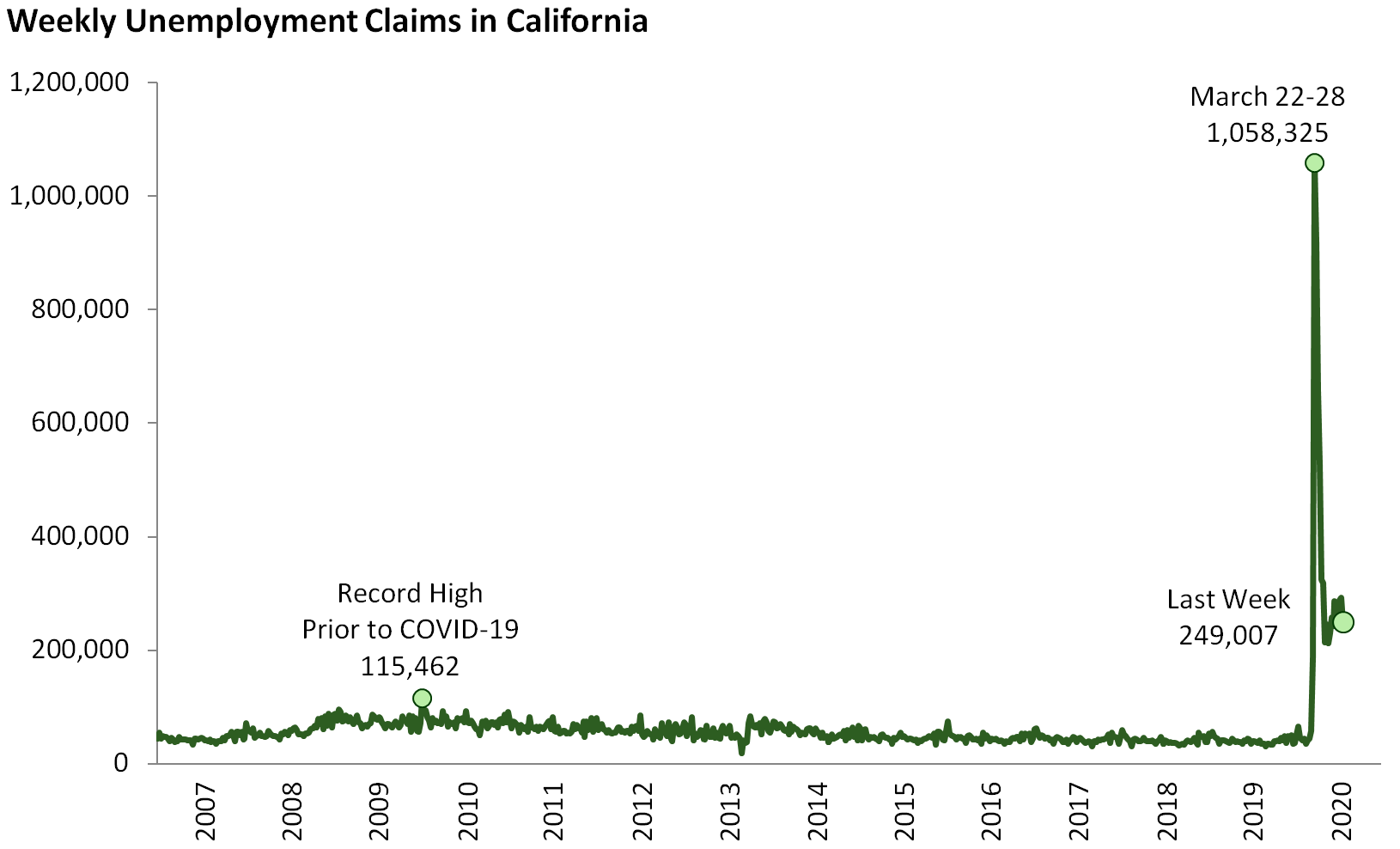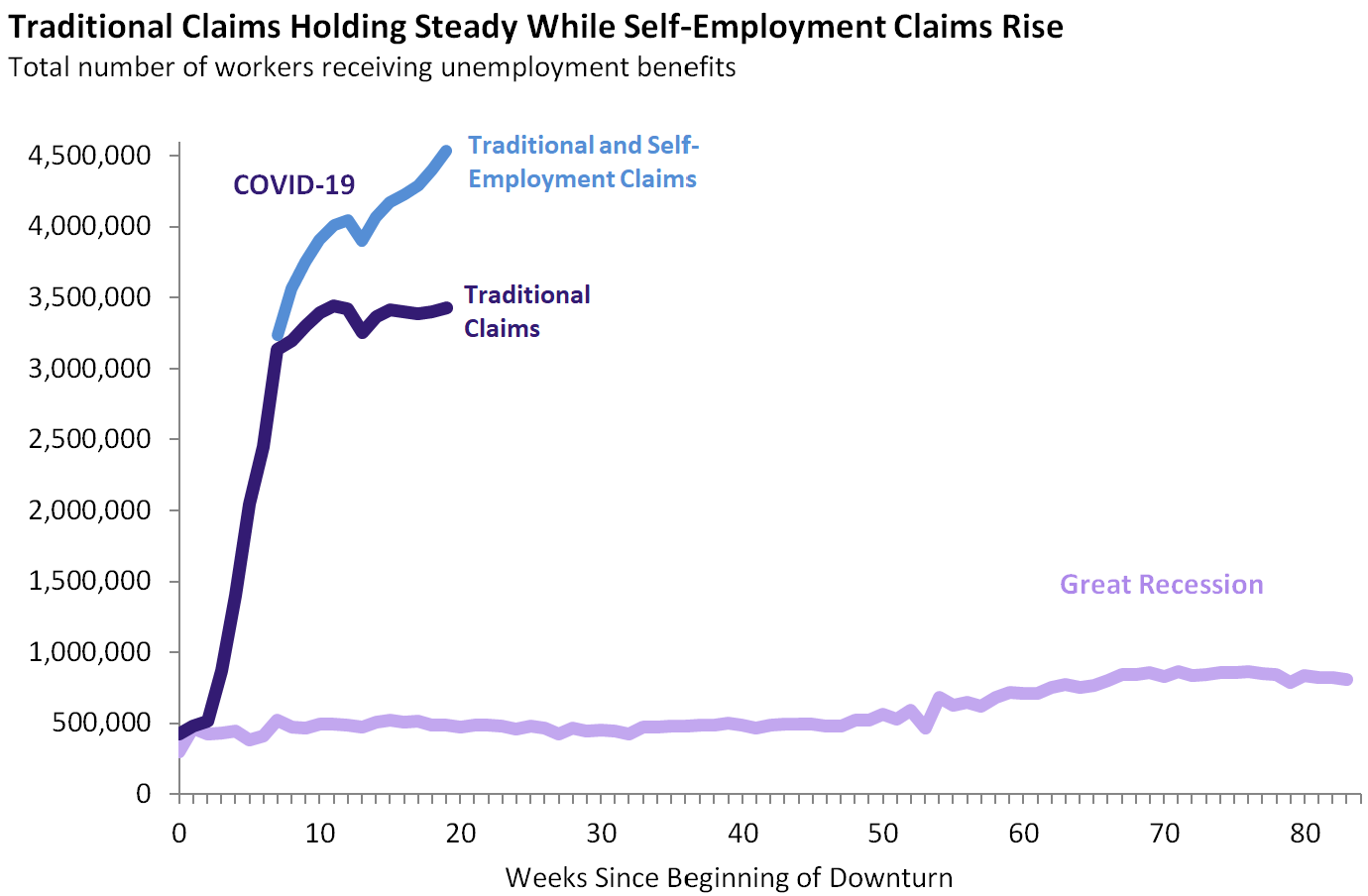As a result of the COVID-19 pandemic, California has experienced an unprecedented rise in unemployment since the beginning of March. Through March and April, the key measure that captured the impact of the virus on the state’s workers was the number of new unemployment claims being filed each week. Going forward, this number will still be important as a gauge of whether a second wave of business closures and layoffs is emerging. Equally important to track going forward, however, will be the level of continued claims—the total number of people receiving unemployment benefits in a given week. Should continue claims start to decline, it could signal that some businesses are bringing workers back. Should continued claims remain steady or keep rising, however, it could signal that a V-shaped recovery may be less likely.
Number of New Weekly Claims Remains High. California processed 249,007 claims for regular unemployment insurance between July 19 and July 25. The number of claims processed in the past week remains high, but fell slightly from levels seen during the past six weeks. During that time, weekly claims held steady around 280,000. Weekly claims since mid-March have remained well above the record high prior to the COVID-19 outbreak of 115,462 in January 2010.
Continued Claims Hold Steady Near Their COVID-19 Peak. As of July 25, California had about 3.4 million employees receiving traditional unemployment benefits. For the past several weeks, continued traditional unemployment claims have remained steady near their peak COVID-19 level. For the sake of accurate historical comparison, the graph below shows only the traditional unemployment claims.
Self-Employment Claims Jump by More Than 100,000. Between July 19 and July 25, California had 1.1 million self-employed workers receiving unemployment benefits under Pandemic Unemployment Assistance—a new program created to expand eligibility for unemployment insurance to self-employed workers. The number of self-employed workers receiving benefits jumped by more than 100,000 from the prior week. While the number of traditional unemployment claims has remained steady over the past month or so, the number of self-employed workers receiving these federally funded benefits has increased by more than 50 percent. (The graoh below shows both traditional and self-employment claims. The most accurate comparison is between the Great Recession and COVID-19 traditional claims, as self-employed unemployment benefits were not available during the Great Recession.)


